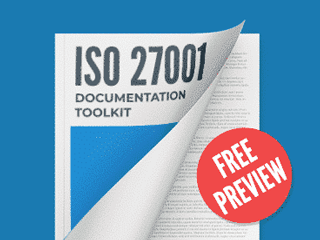Documents and records
1 - A further point to the below on when a document can become a record.
This is the principle in the document change history section of documents, that I’ve been basing our document version control journey on:
V0.1, v0.2, v0.3, v0.4 = Drafts
V1.0 = Approved version based upon v0.4
V1.1, V1.2, V1.3 = Updates to the v1.0. Draft status.
V2.0 = Approved version based upon v1.3
V2.1, V2.2, V2.3, V2.4 = Drafts
V2.4 is reviewed and approved
V3.0 = New approved version.
I had thought that as soon as a document has approved status then it becomes a record. At that point the document which is now in the record log, is subject to the controls re assigning an owner that must check the content on a given review date to ensure that the information and data contained with the document is accurate, current and relevant.
From the advice you have given, I realise I have miss-understood what a record can be and also the control that applies to records. The above example of a document, from what you are saying, is not to be considered a record. However, the quality control still needs to take place to review all documents that have information and data in for their accuracy and relevance etc.?
2 - Records cannot be edited or amended and they have retention periods, whereas documents are only required up until the point that they are useful to the business. Therefore, all previous versions of documents can be archived or deleted. Is this a correct statement?
3 - A secondary point, is the above example of version control a good practice approach or am I leading our team down the wrong path?
Assign topic to the user
1 - A further point to the below on when a document can become a record.
This is the principle in the document change history section of documents, that I’ve been basing our document version control journey on:
V0.1, v0.2, v0.3, v0.4 = Drafts
V1.0 = Approved version based upon v0.4
V1.1, V1.2, V1.3 = Updates to the v1.0. Draft status.
V2.0 = Approved version based upon v1.3
V2.1, V2.2, V2.3, V2.4 = Drafts
V2.4 is reviewed and approved
V3.0 = New approved version.
I had thought that as soon as a document has approved status then it becomes a record. At that point the document which is now in the record log, is subject to the controls re assigning an owner that must check the content on a given review date to ensure that the information and data contained with the document is accurate, current and relevant.
From the advice you have given, I realise I have miss-understood what a record can be and also the control that applies to records. The above example of a document, from what you are saying, is not to be considered a record. However, the quality control still needs to take place to review all documents that have information and data in for their accuracy and relevance etc.?
Please note that a document only becomes a record when you cannot change it anymore (at most you can add an amendment, but the original record is kept intact), and you need to implement controls to ensure unauthorized charges do not occur. While it is subjected to updates, you need to review it when necessary to ensure it is still accurate and relevant, so quality control still needs to perform actions on documents.
2 - Records cannot be edited or amended and they have retention periods, whereas documents are only required up until the point that they are useful to the business. Therefore, all previous versions of documents can be archived or deleted. Is this a correct statement?
Filling and exclusion of a number of obsolete versions of documents (i.e., approved versions that were replaced by updated ones) will depend on the applicable requirements for records retention. For example, for some documents, you may need to keep all previous versions, while for others you may need to keep only the two previous versions.
3 - A secondary point, is the above example of version control a good practice approach or am I leading our team down the wrong path?
Your example of versioning is a common one used in the marketing and is fine to be used for ISO 27001.
Comment as guest or Sign in
Sep 18, 2020


